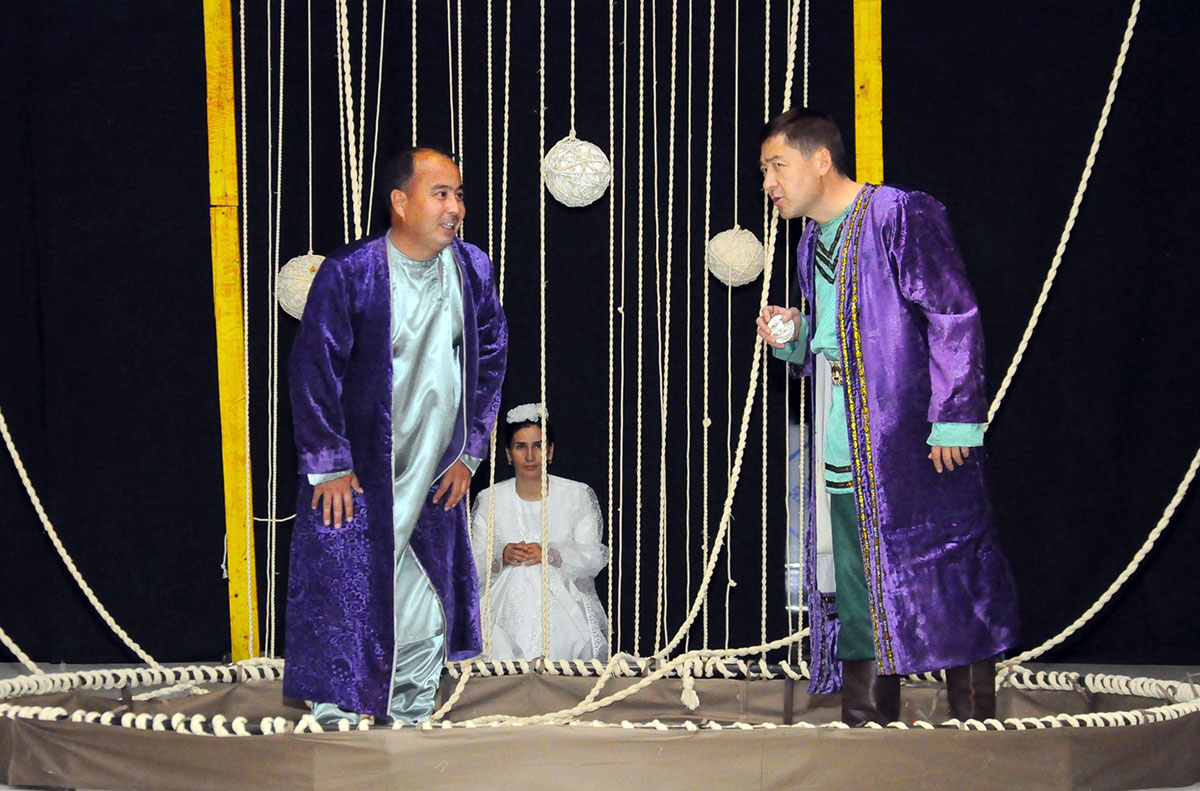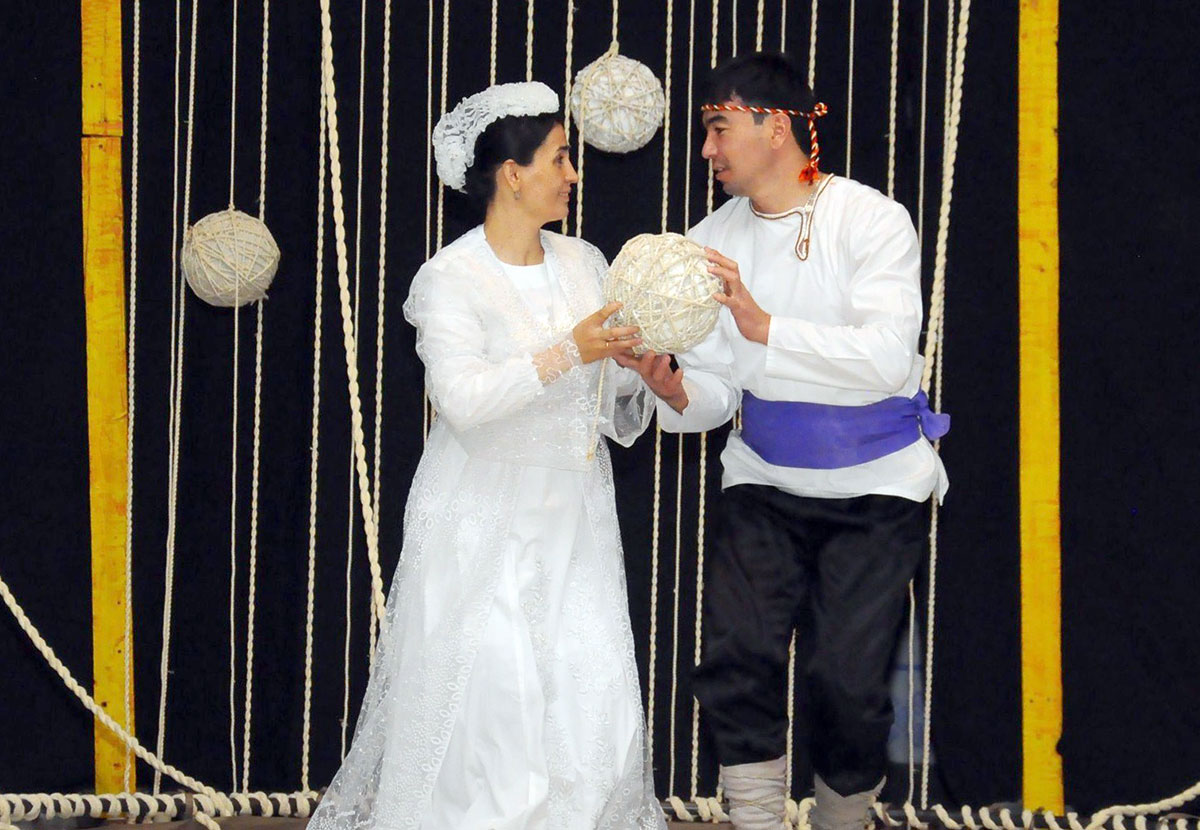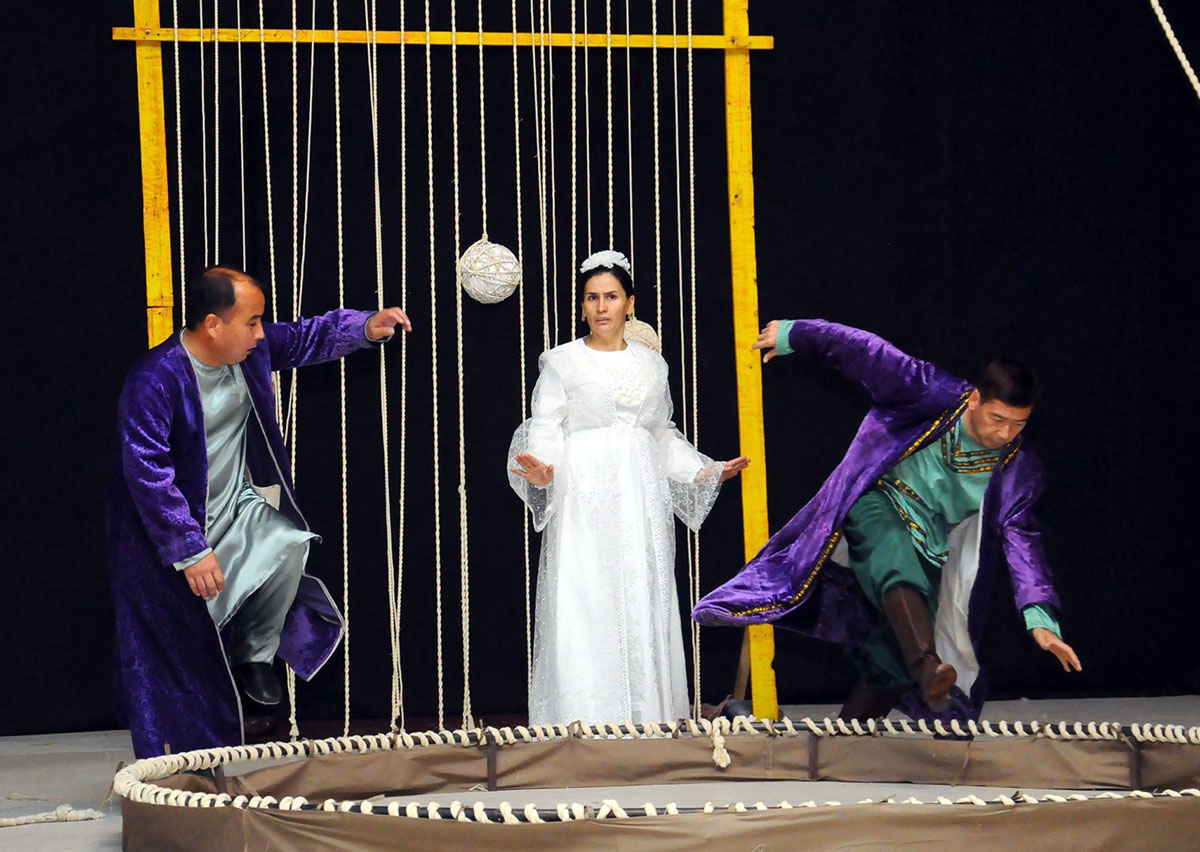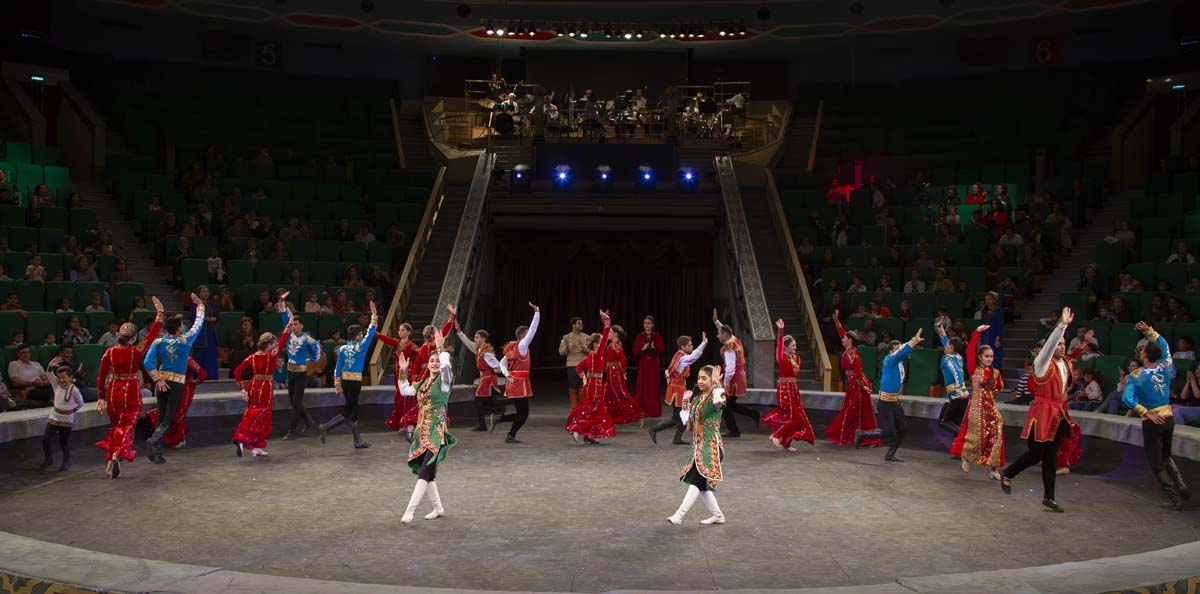Drama of the Japanese playwriter Kinoshita Junji «Twilight Crane» formed the basis of the new stage production of the Nurmuhammed Andalib Dashoguz Music and Drama Theater.
The performance has a lot of abstract music and lighting effects. The actors on the stage perform plastic sketches and pantomime. However, the adaptation of a Japanese fairy tale into the Turkmen language is somewhat different from the classic story that every child in the Land of the Rising Sun is familiar with. The translation of the Turkmen author Anna Melyayev was taken as a literary basis.
«Twilight Crane» play describes a story about a wife of poor rural man. She – is a crane, who transformed herself into a woman, after an innocent young man rescue an injured bird. In gratitude a girl wove for him beautiful fabric with a crane's feather, which he sold in a market. The envious neighbors convinced the young man to weave more fabric.
Once a husband breaks his promise by looking at wife during her work. A broken vow leads to tragedy, and the crane girl flies away from him forever.
– We staged this play for youth, – talked the director Guvanch Baymedov. – The philosophical themes present in the fairy tale - about love, friendship, trust and betrayal - are instructive. The main character, having his happiness, completely forgot about it, did not appreciate what was given to him by God from above. Indeed, in the East, the crane is considered an intermediary between the world of gods and people. The general message of the performance is clear and simple - wealth is not the most important thing in life. Appreciate what you have and don't seek profits.
The follower of the Vakhtangov school, Guvanch Baymedov created the stage play in the key of the conditional theater. The entire set design is concise, preventing the viewer from being distracted by everyday aspects. A circle is set on the stage in which the theatrical scene takes place. Elastic ropes symbolize the main character's house, and when the characters quarrel, the ropes are pulled together into a cross.
The crane-girl over and over again losses her feather that fill the stage space. There is heavy self-sacrifice, which leads to a dramatic end, behind the heartfelt lightness of feather.










